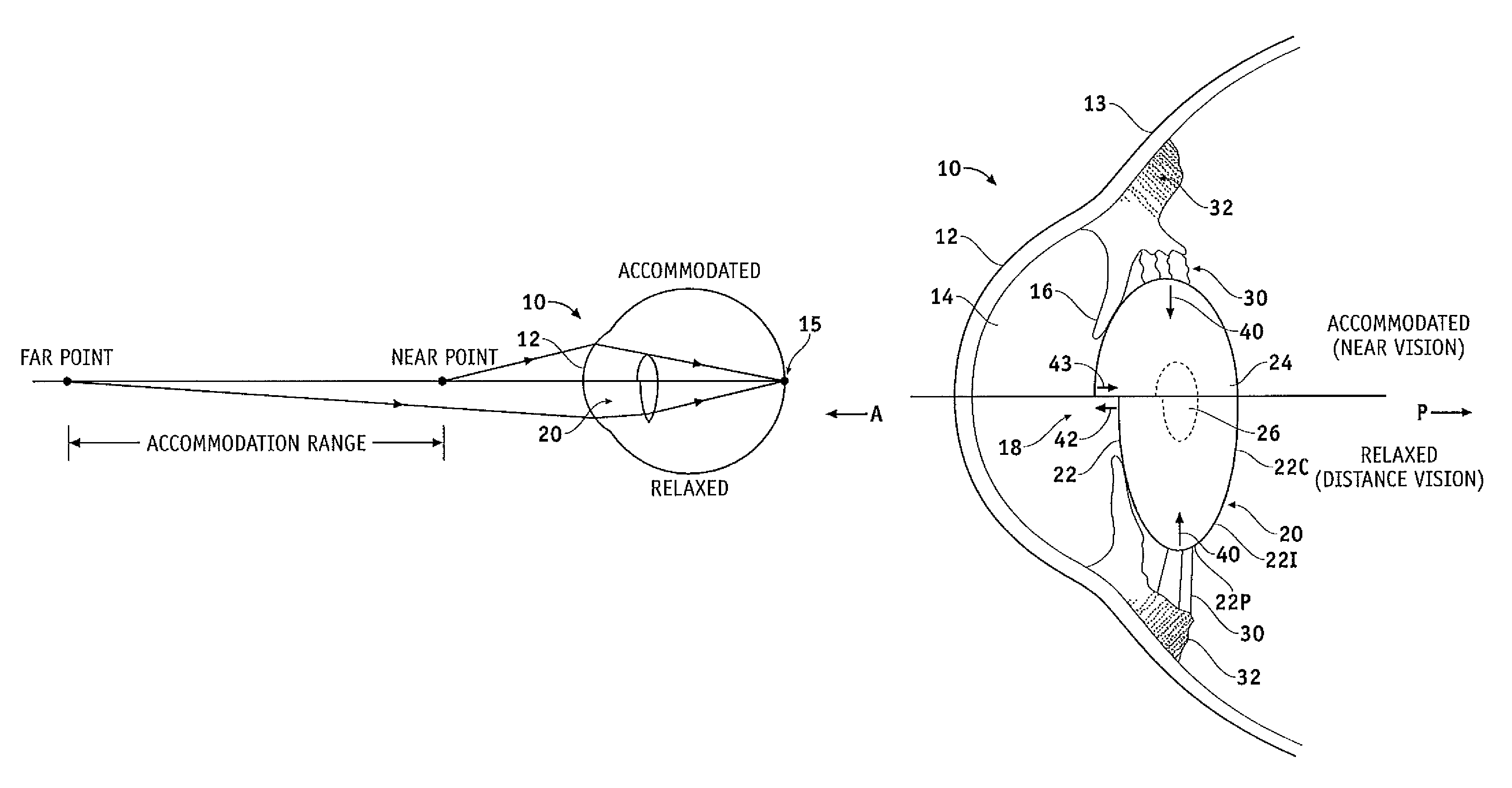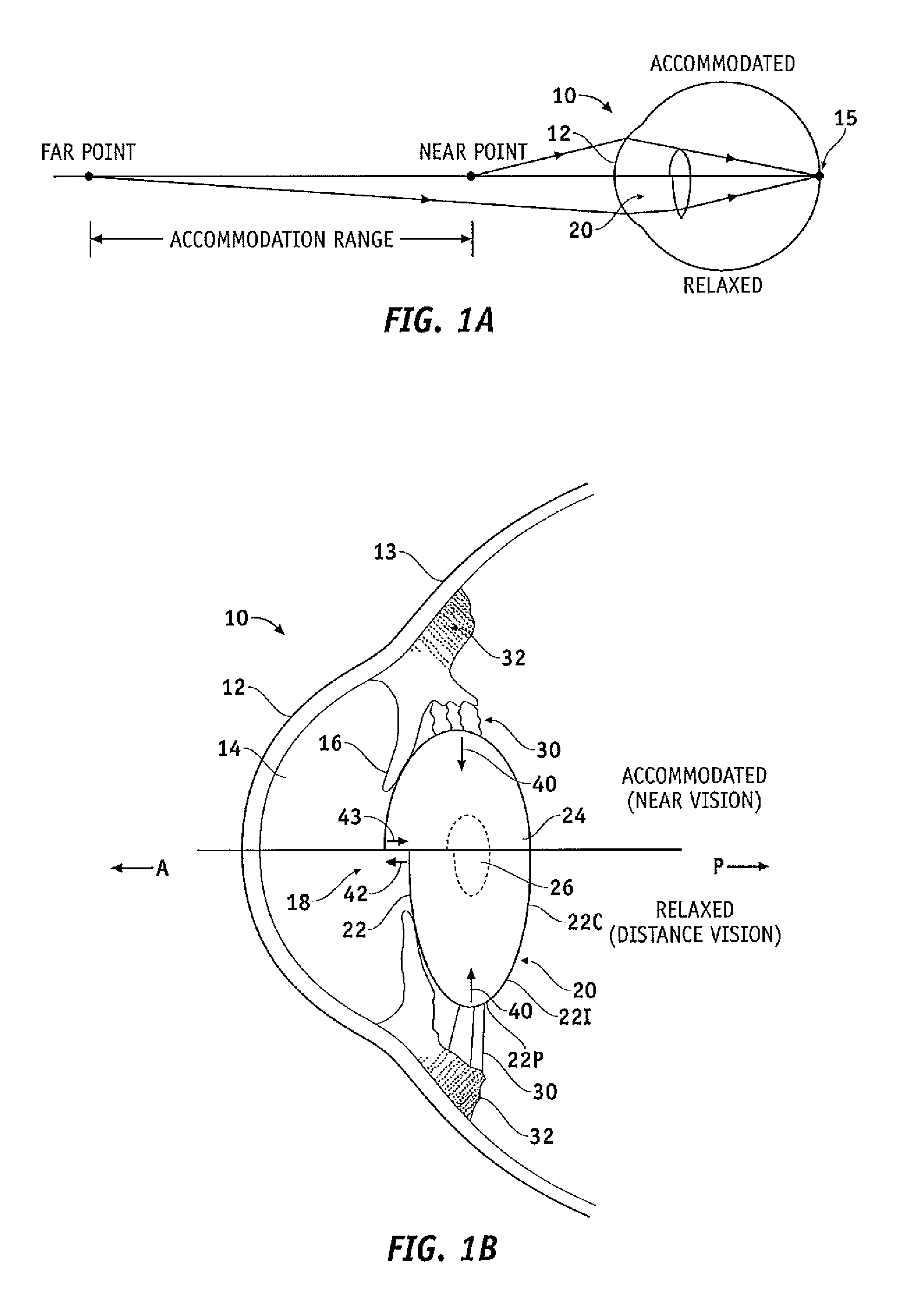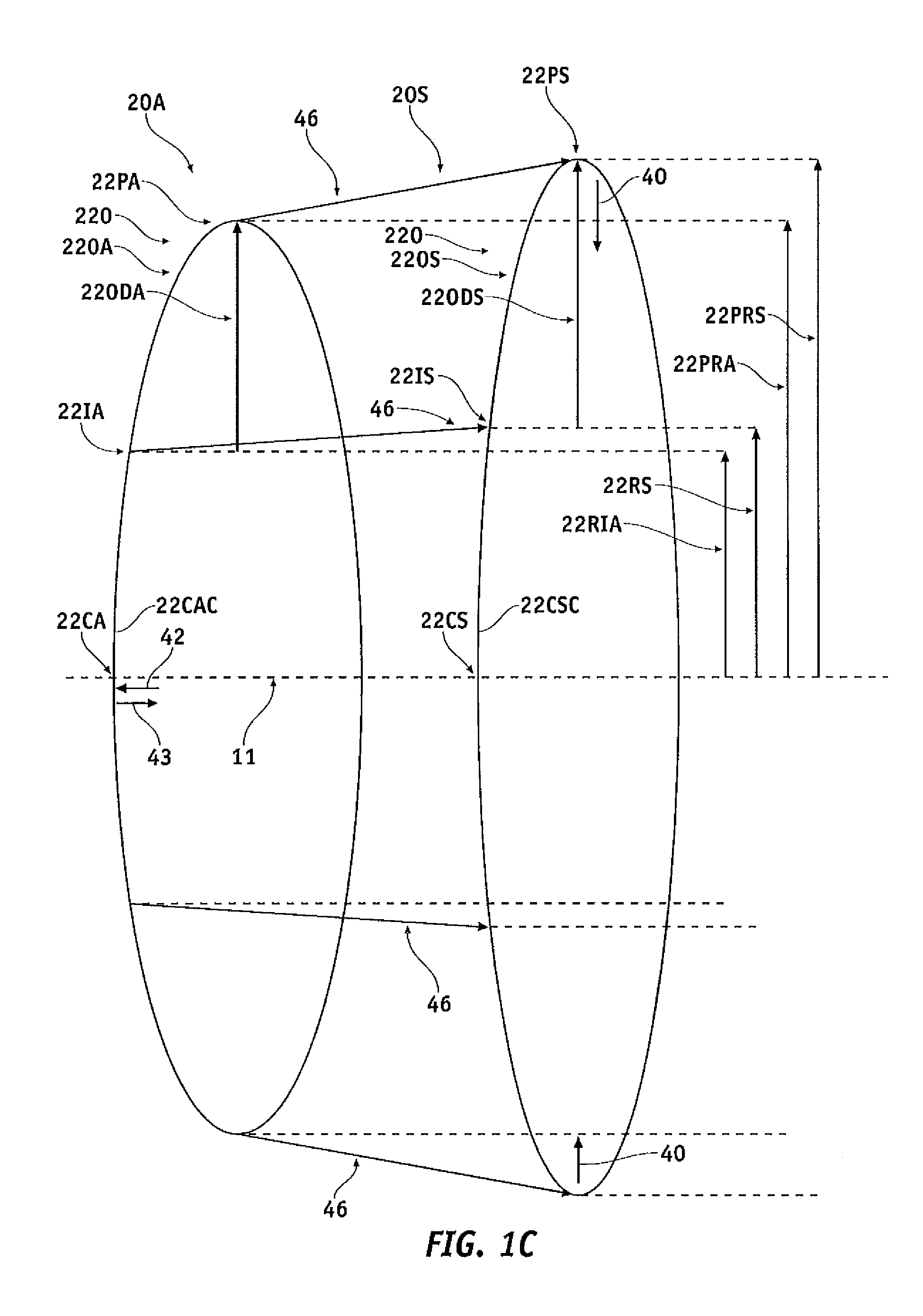Capsular membrane treatments to increase accommodative amplitude
a technology of amplitude and accommodation, applied in the field of accommodation of the eye and treatment of presbyopia, can solve the problems of less than ideal presbyopia correction in at least some instances, image appears blurred, and the transition from near vision to far vision with reading glasses can be less than ideal, so as to improve the coupling of the elastic peripheral portion, improve the accommodation of the eye, and improve the effect of the eye accommodation
- Summary
- Abstract
- Description
- Claims
- Application Information
AI Technical Summary
Benefits of technology
Problems solved by technology
Method used
Image
Examples
Embodiment Construction
[0065]Embodiments of the present invention as described herein can be used in many ways to improve accommodation of the presbyopic eye such that accommodation is increased to at least some extent. The embodiments as described herein can be used to treat presbyopia with an otherwise healthy eye, in a non-invasive or minimally invasive manner, such that the accommodation of the natural lens of the eye is enhanced. The embodiments as described herein can also be used in conjunction with IOLs such that the amount of accommodation with the IOL can be increased. The treatment of the capsular tissue can increase radially inward force to an IOL from about 1 gram (hereinafter “g”) to at least about 3 g, for example at least about 4 g, in exemplary embodiments at least about 6 g, so as to provide corresponding improvement in accommodation, for example at least about a two fold increase, for example about a three fold increase, in the amount of accommodation when combined with a commercially a...
PUM
 Login to View More
Login to View More Abstract
Description
Claims
Application Information
 Login to View More
Login to View More - R&D
- Intellectual Property
- Life Sciences
- Materials
- Tech Scout
- Unparalleled Data Quality
- Higher Quality Content
- 60% Fewer Hallucinations
Browse by: Latest US Patents, China's latest patents, Technical Efficacy Thesaurus, Application Domain, Technology Topic, Popular Technical Reports.
© 2025 PatSnap. All rights reserved.Legal|Privacy policy|Modern Slavery Act Transparency Statement|Sitemap|About US| Contact US: help@patsnap.com



